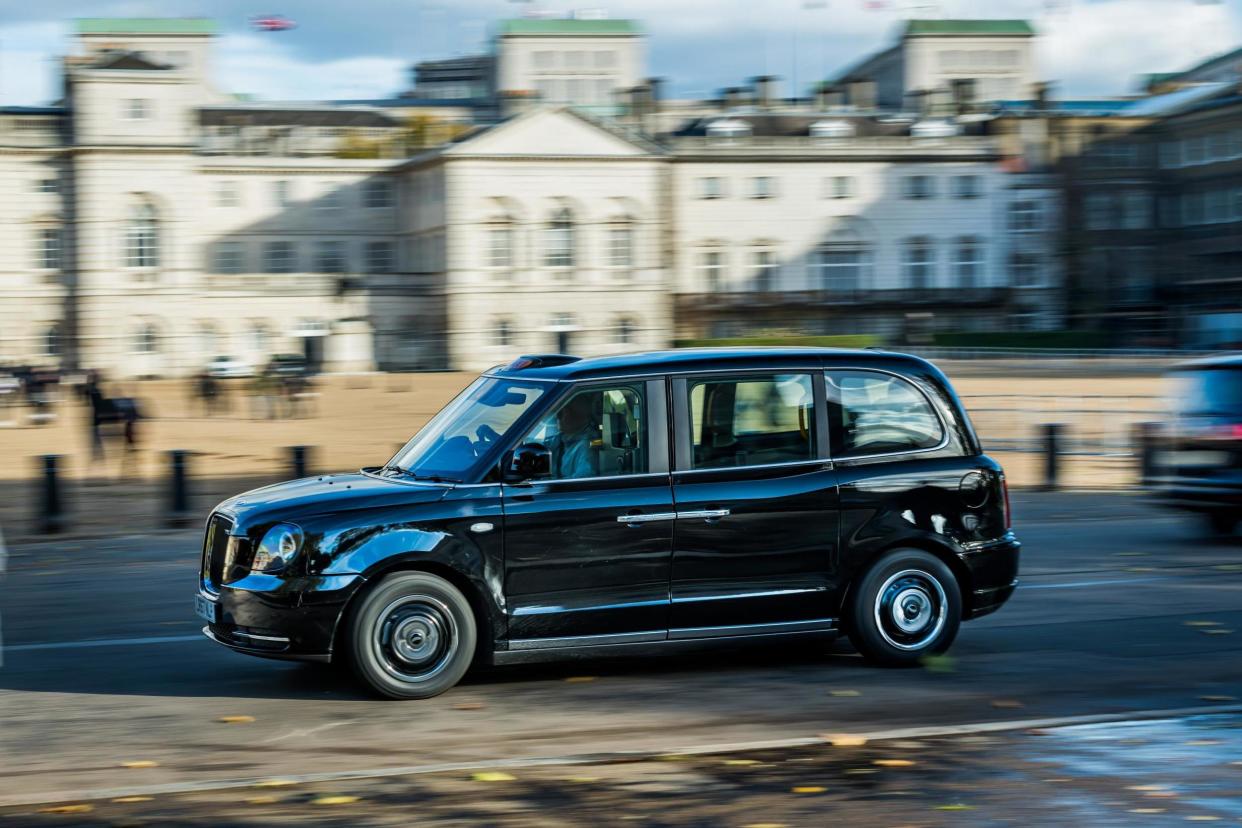First electric black cabs arrive in London

London’s first new electric taxi glided silently and cleanly into service today in search of the first fares to travel emissions-free in a black cab.
Bought by driver David Harris, it swept onto the streets of central London after becoming the first new electric taxi to be officially certified by Transport for London’s test centre.
It did so only after manufacturer LEVC (London EV Company) overcame a glitch that meant taxi meters were unable to “speak” to the new vehicle, causing delays to the licensing process. Costing from £55,599 (£177 a week over five years, £10 more per week than diesel models), it is the first of 9,000 new zero-emission electric black cabs to be on London’s roads by 2020.
The emissions-free TX eCity has a range of 80 miles on electricity alone, though its batteries can be topped up by its on-board 1.5-litre three-cylinder petrol powered generator, giving a maximum range of about 400 miles.
The electric engine does not directly drive the new cab’s wheels, only charging up the batteries.
The new TX has the black cab’s legendary tight turning circle, seating for six passengers, plug-in points to charge passengers’ mobile phones and laptops, a glass panoramic roof enabling visitors to soak up London’s famous landmarks, and is claimed to be the most advanced taxi ever, after £325 million investment by LEVC parent company Geely, of China.
For Mr Harris, 46, a former professional tennis player who started driving a black cab 21 years ago, the key benefits are cash savings.
“It’s great that it is emissions-free, and it drives even better than my wife’s Mercedes,” said Mr Harris, of Chingford. “It rides over bumps and ramps much better than the old model, it’s far more roomy and comfortable for passengers as well as for the driver.
“The important thing is it will save me about £600 a month in reduced fuel and servicing costs. It will help me move back to what I felt I should have been earning.” Mr Harris covers around 32,000 miles a year at work.
Other benefits on the new cab include an easier-to-use ramp for wheelchairs, bodywork that’s easier and quicker to repair, autonomous emergency braking (AEB), as well as lane-departure and forward collision warning, and sat-nav. LEVC says charging the new cab’s batteries will take as little as 20 minutes for an 80 per cent charge.
From the start of the year, TfL rules allow only low-emission capable vehicles to join its fleet of 23,000 cabs.

 Yahoo News
Yahoo News 
